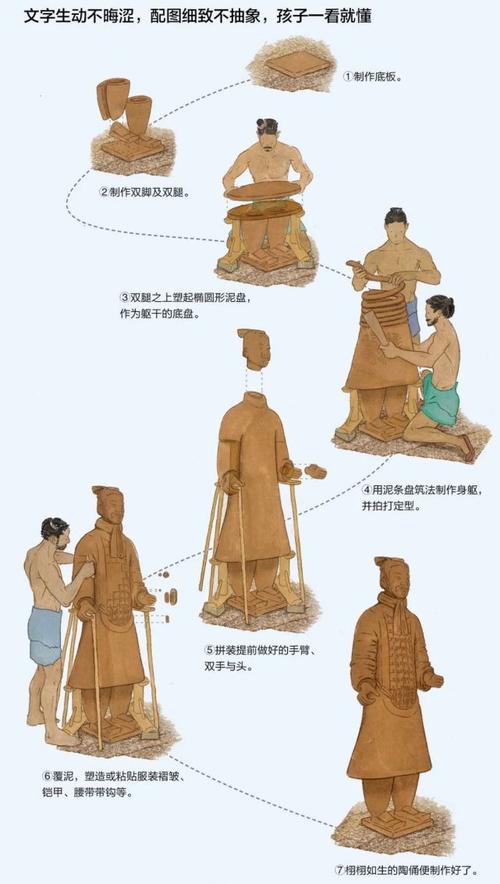
How Were So Many Terracotta Warriors Made?
The Terracotta Army, an awe-inspiring collection of over 8,000 life-sized figures, stands as a testament to the ingenuity and organizational prowess of ancient China. But how did they manage to create so many unique and detailed sculptures? Let's delve into the fascinating world of ancient Chinese craftsmanship to understand the production process.
Mass Production with Local Resources
Contrary to popular belief, the Terracotta Army figures were not individually sculpted. Instead, they were crafted using a sophisticated form of mass production, a system surprisingly similar to modern assembly lines. This process, reliant on both skilled artisans and common laborers, allowed for the creation of an army of thousands in a relatively short period.
This massive undertaking began with sourcing materials. The clay used to make the figures, a type of loess readily available in the region surrounding the mausoleum, was highly malleable when wet, making it ideal for shaping and molding.
Division of Labor and Assembly Line Production
A key factor in the rapid production of the Terracotta Army was the implementation of a highly organized division of labor.
-
Specialized Workshops: Government-supervised workshops, strategically situated near the mausoleum site, were established for different stages of the production process. Some workshops focused on crafting specific body parts, while others specialized in details like armor, weapons, and facial features.
-
Interchangeable Parts: Within these workshops, artisans and laborers worked in teams, each specializing in creating a specific component of the figures. Heads, arms, legs, and torsos were molded separately, often using molds for efficiency and consistency.
-
Assembly and Finishing: Once the individual clay components were fired and cooled, they were transported to an assembly area. Here, skilled artisans meticulously joined the pieces using a technique called luting. This involved applying a liquid clay mixture (slip) as a binding agent, effectively fusing the sections together.
Individuality Through Detailing
While the mass production process ensured efficiency, it was the final stage that truly brought the Terracotta Army to life. Once assembled, the figures underwent meticulous detailing to achieve their remarkable realism and individuality.
-
Facial Features: Artisans painstakingly sculpted individual facial features onto each figure, resulting in a stunning variety of expressions, ages, and ethnicities. This attention to detail adds a human element to the army, making each soldier a unique creation.
-
Armor and Clothing: Clay armor, intricately detailed to mimic the different types worn by various ranks of soldiers, was added. Clothing, also crafted from clay, was draped and folded to create an incredibly realistic effect, further highlighting the individuality of each figure.
-
Painting and Pigments: Finally, the figures were brought to life with vibrant paints made from natural pigments. While much of the original paint has been lost due to exposure to the elements, traces that remain reveal an army adorned in bright colors, a far cry from the monochrome appearance they are known for today.
Q&A
1. Why are the Terracotta Warriors different colors?
Originally, the Terracotta Warriors were painted in vibrant colors to enhance their realism. Over time, exposure to the elements has caused much of the paint to fade or flake off, leaving the figures with the more muted, earthen tones they exhibit today.
2. Were the Terracotta Warriors made from real people?
Contrary to some legends, the Terracotta Warriors were not cast from live subjects. They were crafted using molds and individual sculpting, explaining the variations in their features and postures.
3. Why were so many Terracotta Warriors made?
The sheer scale of the Terracotta Army reflects the belief system of the Qin Dynasty. The first emperor, Qin Shi Huang, aimed to recreate the grandeur of his earthly court in the afterlife, requiring a vast army to protect him and project his power for eternity.